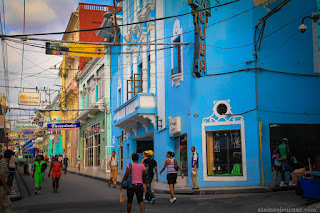A Historical Look at Cuba's Cuisine
Written by Sophia Bass
Cuban cuisine has been influenced by Spanish, Aboriginal, African and Caribbean influences. Food sources mainly come from rivers, lakes, and the ocean which provide much of the culture’s protein sources. The landscape is known for rich agriculture, producing fruits, vegetables, and “casabe,” which is a grain used for bread-making.
During the Fidel Castro days, Cubans were cut off from the world and were deprived from outside food sources. A typical diet for a Cuban would often be beans, rice, and chicken or fish. Today, Cuba has access to a broader spectrum of ingredients. Modern chefs are looking towards native edibles, old traditions, and foreign influences to help re-shape Cuban cuisine.
Aboriginal influences continue to impact island dishes. Cassava, sweet potatoes, and pumpkins are just a few of the many food sources that are main staples on the island. As Cuban natives fished and hunted, everything that was found was consumed quickly because the hot climate caused food to spoil quickly.
When the Spanish arrived, they brought cattle, pigs, and chickens to the island, which became a main source of protein for Cubans. Slaveholders and colonists often feasted on pork, bananas, plantains, and okra, which came from African regions. The east of Spain brought rice to many areas of the Hispanic Caribbean. A commonly known rice dish called “congri” originally came from Haiti. There, red kidney beans are called “kongo” and rice “ri.” The name is originally Haitian Creole. Both Spanish and African influences heavily shaped the flavor of Cuban cuisine.
At the start of the 20th century, Spanish immigration heavily influenced Cuban cuisine. With mixtures of tomato sauce with spices such as oregano and cumin, Cuban cuisine adapted these flavors in their cooking and continue to use them in stews, soups, and main courses. If you travel to Cuba Today, you will experience the flavors of different regions in every dish.




Comments
Post a Comment
Thanks for taking the time to write a comment! You can also share our blog on Facebook or any other social media that you use. Spread the joy!